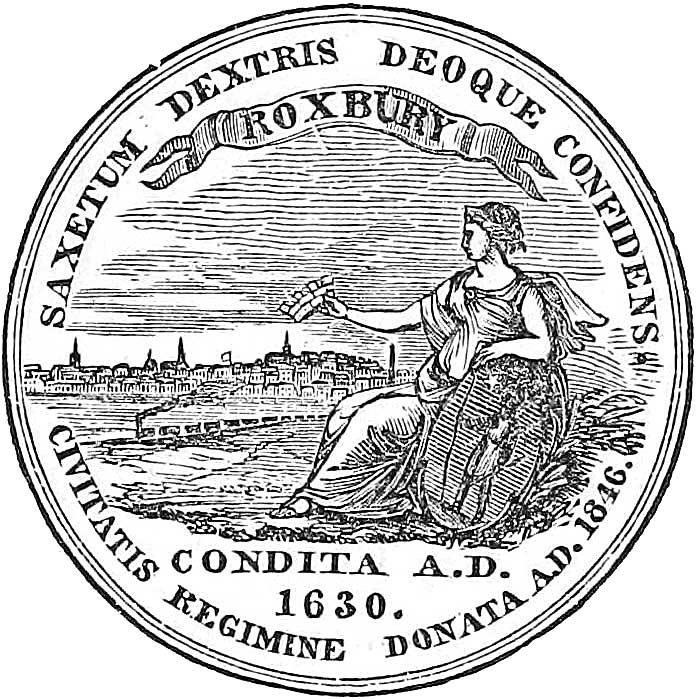
Roxbury has long been known as the center of Boston’s black community. But it wasn’t always that way. Blacks didn’t begin moving into the neighborhood in great numbers until the middle of the 20th century. Until then, blacks lived primarily in Boston’s downtown neighborhoods.
From about 1830 to 1890 most black people in Boston lived in the West End. They filled the housing beyond Joy Street and down along the northwesterly slope of Beacon Hill to several blocks below Cambridge Street.
But in this locality, the black population began to decline from 80 percent in 1865 to 36 percent in 1890. After 1895 there was rapid movement into the South End due to high rents and aging housing on the Hill. Black families had been paying the high rents for run-down housing in the Beacon Hill area because discrimination had made it difficult for them to move into white neighborhoods — forcing them to stay where they were.
But by 1895 those who had managed to move away from the Beacon Hill neighborhoods provided a wedge for others to follow. The number in the West End was 2,935 in 1890, 2,600 in 1900, and 2,000 in 1905. By 1910 there were only about 1,500 left.
In the late 1890’s Jewish people began to locate in the old black neighborhoods — buying and fixing up the old houses and building tenements. The change was most dramatically evidenced when two black church buildings were transformed into Jewish synagogues — one of them being the African Meeting House which still stands today on Beacon Hill Court off Joy Street. The Meeting House (built in 1806) was purchased in 1971 from a Jewish congregation by the Museum of Afro-American History.
At the start of the decline of the black community in the West End, the lower South End, from Pleasant Street south to Castle Street and from Washington Street to Columbus Avenue became black neighborhoods. As early as 1875 some 700 blacks lived in this locality and by 1898 the number had increased to nearly 3,000. Between 1880-1890 blacks and whites lived side by side as neighbors in the lower South End. But with increased traffic, the growth of small shops and aged housing this mixed neighborhood began to break up.
Those whites and blacks who could afford to moved away to the suburbs. Those blacks who didn’t leave the city moved along with the emigrants from the West End and those migrating from the Southern states, to residences in the upper South End and lower Roxbury.
The early nucleus of this new black community was bounded by Northampton and Lenox Streets at the south, Kendall Street in the center and Sussex and Warwick Streets at the north. By 1900, nearly 3,500 or 30 percent of the blacks lived in this area. Around 1910, approximately 5,000 black people, or 40 percent of Boston’s black population, lived between Northampton Street on the south, Ruggles Street on the north, Washington Street on the east and Tremont Street on the West. Within this area lived several white ethnic groups — the Irish forming the largest proportion, followed by “Yankees,” Jews and a small number of Swedes.
Only a few streets within this district — Windsor, Camden, Kendall and Sawyer — were all-black. Most streets were integrated and some contained no blacks at all. For the most part it was not like the old solid black quarters of the old West End; nor was it like the solid Jewish and Italian ghettos in the city at the time. Competition for low rents in the area kept the neighborhood mixed with Irish and Jewish residents.
Washington Street from Massachusetts Avenue to Ruggles Street was a crowded business thoroughfare of stores and tenements. At the west side of the district was Tremont Street with ground floors below the apartments occupied by shops and businesses, most of them black-owned. The streets were wide, open and airy with much space for trees and grass.
One other rather distinctive black neighborhood existed in early 1900’s in an area which today is just a block from the Boston Public Library where Back Bay Station now stands. This neighborhood was on Dartmouth Street to the North and through Harwich, Truro, Holyoke and Carlton Streets to the south.
The wealthiest blacks lived on Buckingham Street and had moved there soon after the tidal swamp area had been filled in with land in the late 1860’s. But in 1897 when Back Bay Station was built the houses on Buckingham Street, nearly all being owned by blacks, were torn down, with many of the blacks moving to the suburbs.
In the first 300 years of Roxbury history, there is little record of any African Americans living in there. Roxbury began as a Puritan settlement, was incorporated as a town, and eventually became a city. The town was annexed by Boston in 1868. By the 1930s a small number of blacks were living in the neighborhood, primarily in Lower Roxbury — the area between Massachusetts Avenue and Dudley Square.
By the early 1970s, a combination of declining property values in Roxbury and rising values in the South End and discriminatory home lending practices had conspired to push Boston’s black community into Roxbury. As Latinos moved into Boston in greater numbers in the 1970s and ’80s, Roxbury became more heterogeneous. In 1990, the neighborhood was 79 percent African American, 14 percent Latino and 3 percent white.
Today, Roxbury is 53 percent black, 28 percent Latino and 12 percent white.






